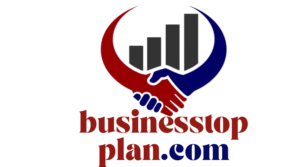HR software has become essential in today’s dynamic workplace, helping companies streamline and enhance workforce management. Automating routine tasks allows HR teams to focus on strategic functions like talent acquisition, employee engagement, and compliance. From payroll and benefits management to attendance, performance tracking, etc., the HR software also comes with competency-designed functions to manage your core HR operations more effectively. The more integration, the higher productivity and a stronger sense of a unified workplace togetherness; you want your team members TO collaborate. As a result, HR software plays a vital role in aligning employee objectives with organizational goals, contributing to long-term growth and stability.
Performance Management
Real-time feedback, goal tracking, and development plans all go a long way in an individual workforce strategy. However, if one expects such seamless control at scale – that is, in motivated 10-member or even 1000-member organizations – it’s important to note that managed HR services offer additional tools, such as structured performance evaluations that clearly define employees’ targets. HR teams can automate workflows and organize performance reviews regularly, incorporating performance review phrases. The software also provides insights and analytics that highlight areas for improvement and development, enabling HR to support employee growth while aligning individual performance with the company’s objectives.
Ensuring Compliance
Maintaining compliance with labor laws and industry regulations is crucial for any organization. HR software aids in this by providing tools that automate compliance-related processes, reducing the risk of errors and fines. Best of all, these systems have a built-in legal and regulatory framework, processing updates as they occur – so your HR team is immediately made aware. Automated Reporting, Document Tracking, and Policy Management — these auditing functions ensure that companies comply with necessary standards. Additionally, HR software often includes reminders for essential actions such as employee certifications and policy acknowledgments, further enhancing compliance efforts.
Finding and Hiring Employees
The recruitment process is streamlined significantly with HR software, as it simplifies sourcing, screening, and hiring of candidates. Job postings can be created and published across multiple platforms, expanding the reach to a broader audience. Built-in applicant tracking systems organize and categorize applications, enabling HR teams to focus on the most suitable candidates. Furthermore, this software often integrates with testing and assessment tools, allowing recruiters to gauge candidates’ skills more effectively. HR software optimizes how companies hire, ensuring they attract and land great people who mesh with their goals and culture.
Training and Development
Supporting employee growth through structured training and development is essential for building a skilled and adaptable workforce. HR software, often in partnership with human resources consulting services, offers modules that simplify training programs’ creation, assignment, and tracking. Personalized learning paths and skill assessments enable employees to acquire new competencies that benefit their career progression and the organization. By tracking the completion of training courses and certifications, HR software ensures that employees maintain the necessary skills to stay competitive and compliant with industry standards.
Employee Engagement
HR software fosters employee engagement by providing tools for communication, feedback, and recognition. These systems often include surveys, pulse checks, and other engagement metrics, allowing HR to measure and address employee satisfaction levels effectively. By collecting and analyzing feedback, HR can take actionable steps to improve the work environment, making employees feel valued and heard. Furthermore, recognition features enable managers to celebrate achievements, motivate employees, and boost morale. Enhanced engagement leads to higher productivity, lower turnover, and a more robust organizational culture.
In conclusion…
Incorporating HR software into workforce management improves efficiency and strengthens an organization’s core HR functions. By automating routine tasks and enhancing strategic areas like recruitment, compliance, and engagement, HR software supports aligning employees’ goals with the company’s objectives. This integrated approach helps businesses adapt to changing workforce demands while building a solid foundation for long-term success.

